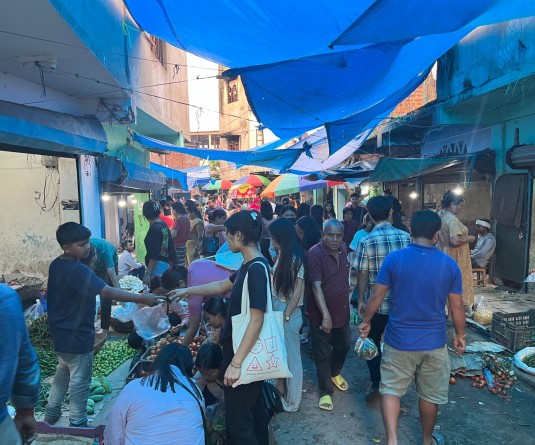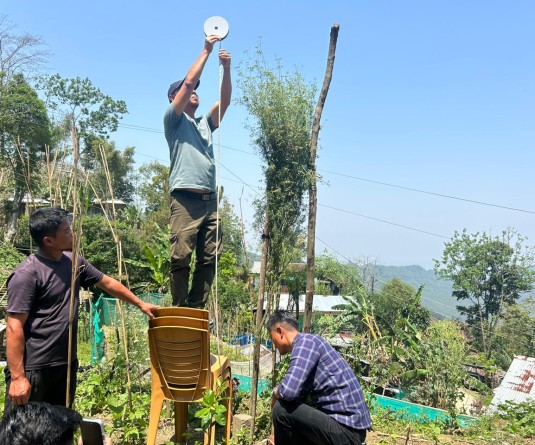Jhum or shifting cultivation, considered as one of the oldest form of agriculture, is a dominant activity in the North East Region. (Morung File Photo)
Morung Express News
Dimapur | September 30
In commemoration of ‘World Commons Week,’ a webinar titled ‘Jhum Cultivation- A Way of Life’ was held organized by the Foundation for Ecological Security (FES) on September 30.
The original meaning of the term ‘commons’ comes from the way communities managed land that was held ‘in common.’ It refers to cultural and natural resources accessible to all members of a society, including natural materials such as air, water, and a habitable earth.
In this context, the webinar focused on jhum or shifting cultivation which is considered as one of the oldest form of agriculture, and is a dominant activity for almost 86% of people in the North East Region.
Speaking as a resource person, policy analyst and development advisor Amba Jamir, underscored the need to look at jhum cultivation as more than just a food production system.
He observed that along with various institutional and cultural linkages, there is also a vast knowledge system that deals with age old practices of resource management, functional skills and farming knowledge such as seed collection and storage, plant breeding, pest management, soil water and nutrition management, etc., making jhum cultivation not just an agricultural activity but a way of life.
Clearing misconceptions
Also highlighting the ‘conservationist’ point of view, Jamir noted that jhum cultivation has often been targeted as a threat to biodiversity and climate change. Terming it as a ‘wrong narrative,’ Jamir pointed out that most communities not only cultivate multiple crops in jhum fields but also have several varieties of residual crops that are used and consumed after the harvest of main crops.
He emphasized on clearing the misconception that jhum cultivation leads to deforestation by pointing out the complex but self-sufficient symbiotic relationship between forests and jhum fields.
Jamir observed that most government policies do not consider improving shifting cultivation and in most cases present weak evidences and assumptions against jhum cultivation. Instead, policies are made with agendas to eradicate, wean away, replace, alternate or rehabilitate shifting cultivation with other forms of permanent agriculture, he added.
He also pointed out that jhum fields which are left to fallow are categorised as ‘wastelands’ which is wrong because there are several residual crops as well as non-timber forest products that still thrive in fallowed lands. After a few fallow cycles, the land is again used for cultivation, so it cannot be called a ‘wasteland,’ he added.
Focus on sustainability
As a key food production and livelihood system for many indigenous and tribal groups especially in the North East region, Jamir observed that the focus should be on making the jhum cultivation system sustainable instead of discrediting the way of life and looking to eradicate or remove the system.
Similarly, conservation biologist Dr Anirban Datta Roy noted the continued relevance of jhum cultivation particularly in the north east region.
He emphasized on the need for government agencies or policy makers to take into consideration the traditional land tenure and management norms of communities that practice jhum cultivation.
Taking the example of the introduction of oil palm monoculture in Mizoram, Dr Roy informed that 1,01,000 hectares of land has been identified for such plantations out of which 17,500 hectares have already been permanently deforested for oil palm.
He stated that such monoculture practices enforced by the state government under the New Land Use Policy (2011) that formalized forestland titles that was decentralized and managed by traditional laws, has resulted in decline of jhum fields and increasing decline in forest cover. This, he said, shows how monoculture and plantations impact not only livelihoods but also biodiversity.
Further, he also pointed out that with the new land-use change affecting tribal people's way of life and customary land management, several indigenous people now face risk of losing cultural and social values along with vast traditional knowledge systems.
The point of focus, as both resource persons concurred, would be in ensuring that the all human, natural, financial and social capitals interlinked with jhum cultivation is taken in to account before jumping on the bandwagon that discredits its relevance.
In the context of Nagaland, there have been noticeable changes in the jhum landscape with farmers introducing crops such as cardamom and tea-based agrobiodiversity farming methods.
As Jamir puts across, there is an urgent need to recognise and document traditional knowledge systems as a ‘global heritage,’ so that communities continue to have food sovereignty and sustainably propagate a practice built upon generations.




